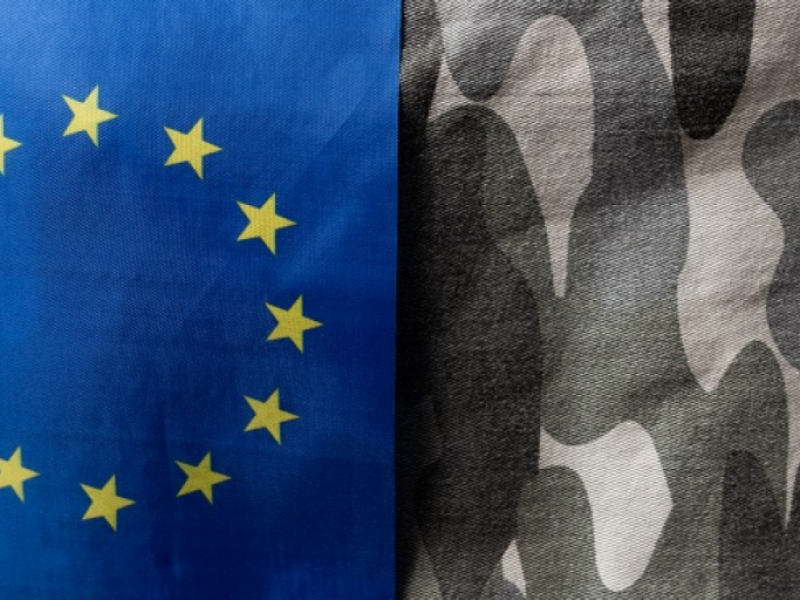Domenico Moro
Commentary no. 275 - 27 September 2023
The Stockholm International Peace Research Institute (SIPRI), in recent months, published the figures for military expenditure incurred in 2022: $2,240 billion ($2,076 at constant 2021 values), a new record, even higher than the $1,400 billion incurred in 1986, when tensions between the USSR and the US were at their peak, and double the lowest level reached in the post-Cold War era: $1,100 billion in the mid-1990s. The answer to the questions that constitute the apparently rhetorical title of this Commentary is threefold: political, economic and technological.
The first answer, which is also the most obvious, is that military expenditure increases at times of insecurity and instability in international relations. The most recent and dramatic example is the armed aggression against Ukraine, a country in a geopolitically sensitive area. More generally, we are facing a structural change, that is, the decline of the world power, the USA, which helped to ensure a minimum of world order, and the emergence of China and other countries as new global political players.
The increase in expenditures between 1998 and 2022, at constant 2021 US dollars, and limited to major geographical areas, can be attributed to: 40 billion to Saudi Arabia and Ukraine, 55 billion to India, 57 billion to Russia, 60 billion to the EU, 263 billion to China and 328 billion to the USA. However, these summary indications hide two facts which, although closely related, should be analysed separately, as they paint a more critical picture than the SIPRI statistics do. The first is economic and the second is strictly technological.
The economic consideration could explain that for some countries, such as Russia and China, the level of military expenditure does not take into account the fact that the purchasing power of these countries is only partially reflected in the current price and exchange rate trends. The International Institute for Strategic Studies (IISS) tried to estimate the actual military expenditure of Russia and China by equalising the purchasing power of these two countries with that of the USA. The result shows that Russia and China spent about twice as much by 2022 as the official figures indicate. Russia spent about $200 billion, not $86 billion, and China about $500 billion, not $290 billion. Thus, at a global level and at homogeneous prices, global military expenditure would exceed $2.5 trillion (without taking into account what other geographical areas actually spent, if the purchasing power parity method were applied to them).
The increase in military expenditure cannot, however, be explained solely by the fact that new players are appearing on the global political scene, who claim greater bargaining power compared to the traditional powers. Together with the emergence of a new balance of power at the global level, there is a structural fact that is bound to weigh even more heavily on the level of military expenditure. This is the incessant technological innovation of military platforms and which, according to the former CEO of Lockheed Martin, Norman Augustine, leads to the production of weapon systems with "technology intensive, high and rising unit costs, and declining volumes".
Establishing the unit cost of a military platform is not simple. However, to have at least a rough idea of the increase in costs over time, it is worth considering the indicative cost of military platforms. For this purpose, the obligatory point of reference is the United States, which, with $877 billion (2022), represents the world's largest market for weapon systems, the most technologically advanced and with a high level of weapon standardisation. Let us consider, as an example, the increase in costs over time of a strategic bomber, a multi-role aircraft and an aircraft carrier, produced in the USA.
As regards the unit cost of a strategic bomber, the most significant US aircraft, the well-known B-52 (Boeing), can be examined. The cost in current values (2022) of the B-52, produced since the 1950s, is estimated at around $120 million; the bomber of the 1990s, the B-2 Spirit (Northrop Grumman), which was initially expected to have a unit cost of $500 million, later saw it rise to $700 million, and the most recent evaluations indicate a unit cost of $1 billion. The latter aircraft is set to be replaced, from 2030, by the B-21 Raider (Northrop Grumman), which is expected to cost around $750 million per unit.
A similar trend can be observed for multi-role aircrafts such as the F/A-18, the F-22 and the F-35. These aircrafts entered into service over a period of several decades and their unit costs vary significantly depending on the different versions and setting up. The absolute costs, at current values, must therefore be considered as indicators of a trend. On this premise, and according to official US sources, the unit cost of an F/A-18 (Boeing), in the 1980s, was $67 million; the unit cost of the F-22 (Lockheed Martin), in the early 2000s, initially projected at $125 million, was later revised to $361 million; and the unit cost of the F-35 (Lockheed Martin) is $160 million at current values.
Other components of the US armed forces, such as the US Navy, share the same trend. The 'Nimitz' class aircraft carriers, which date back to the 1970s and are currently being replaced, had a unit cost of about $5 billion (at constant 2020 values). Modern 'Gerald Ford' class aircraft carriers have a unit cost of $13 billion (2020), excluding R&D costs of $4.7 billion.
Against the backdrop of fierce technological competition between the old and the new global powers, growing global political instability, the militarisation of space and the expected (and alarming) use of artificial intelligence in the military, it seems likely that military expenditure will continue to rise. How can this trend be reversed? Given the tragic European experience of previous centuries, the current multipolarity, without the parallel strengthening of multilateralism, could be the harbinger of a fatal outcome. Only the strengthening of existing multilateral institutions and the establishment of new ones in the field of collective security could put an end to the arms race. The available time horizon does not seem infinite. It will last as long as China (and other emerging powers) do not challenge the existing global institutions. The establishment of the BRICS group, however problematic its actual functioning, and its extension to new members, is a sign that time is running out.
*Member of the Board of Directors and Coordinator of the Security and Defence Area of the Centro Studi sul Federalismo.
Download PDF - Commentary no. 275


 En
En  It
It 


